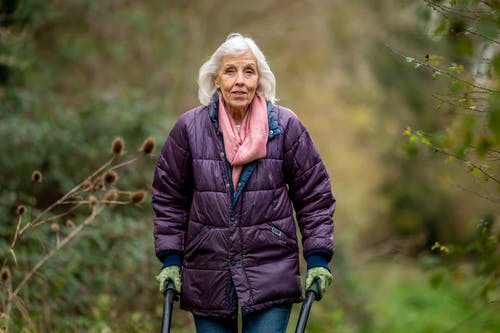Training when you feel well is one thing, but when it comes to feeling under the weather for whatever reason, many of us avoid exercise through fear of potentially ‘making things worse’. On the flip side, others try to continue their exercise programme as if nothing is wrong – so who’s right?! Whilst exercise is known to help a wide range of conditions, it’s important to arm yourself with some knowledge regarding when to train and when to rest to make sure you stay as healthy as possible and recover quickly when you’re not feeling your best.
Contraindications to Exercise
Before discussing a range of conditions under the headings below, it’s worth noting that there are some ‘absolute contraindications’ to exercise that would require you delaying exercise until the issues are resolved. These include any ‘uncontrolled’ conditions (detailed below) such as extremely high blood pressure, angina, arrythmias and diabetes. Recent surgery is also a contraindication for exercise and a health professional should give you the all-clear when it is safe to begin some exercise again. There are also some ‘relative contraindications’ to exercise that mean certain adaptations or precautions may need to be taken. Pregnancy, for example, can be a relative or absolute contraindication to certain types of exercise at different times and between different individuals and so if you have any uncertainty over your medical conditions and exercise it’s essential that you speak to the relevant medical professional before consulting appropriately trained fitness sources. Whilst this blog gives an overview, there is no ‘one size fits all’ approach to exercise and so personalised advice is essential when it comes to your medical history.

Long Term Conditions
This is a hugely broad category and can cover anything from musculoskeletal conditions such as arthritis and osteoporosis to diabetes, high blood pressure, heart conditions and much more. On initial diagnosis of a long term condition you should be referred to a specialist for the relevant treatment and/or talked through management and prognosis by your GP. Physiotherapy may be prescribed which involves targeted exercise that has been proven safe and effective. You may also be referred to an exercise referral scheme (many councils run these) where exercise professionals with additional qualifications will be able to design and support you with a personalised exercise programme.
It’s wise to wait until you have talked through options with a healthcare specialist before starting any new exercise and you should also discuss with them any exercise you’re already doing. For the majority of well controlled long term health conditions such as those listed above, exercise will not only be safe but strongly recommended. There may, however, be adaptations necessary with regards to the frequency, intensity, time and type of exercise you do. By getting advice from a qualified professional you will also be able to ensure that any exercise you do is not only safe but also the most beneficial. Exercises to target certain bodily systems, muscles or joints may be recommended for certain conditions. It may be detrimental to exercise with an uncontrolled long term health condition such as asthma, COPD, diabetes or a heart issue and the majority of exercise professionals will recommend that your treatment gets the condition under control before you take on exercise to avoid potential negative consequences. Look out for future blogs on specific conditions and let me know if there’s any you’d like more information on!

Short Term/Acute Illness
Again, this category covers a wide range of conditions and so there is no clear cut ‘yes’ or ‘no’ answer. Two people experiencing the same condition such as a cold may also have varying symptoms and so some of this comes down to personal choice, however below I give some generic advice on whether exercise will harm or help during short periods of illness.
When suffering from illness, it’s important to note that higher intensity exercise or over exercising can suppress the bodies immune system. Whilst this may not be enough to CAUSE illness alone, it can be detrimental when our body is fighting illness and needs all of its resources to recover. It’s important to consider the intensity of exercise if you do any whilst ill. High intensity exercise may worsen some symptoms such as aches and pains as post-workout muscle soreness can contribute to this and make you feel worse and prolong recovery. Some gentle movement whilst suffering from a cold or a respiratory illness affecting the ‘neck up’ (sinus/nasal congestion, sore throat) may even help to open up the nasal passages and relieve congestion. Again, if you engage in any high intensity exercise whilst experiencing such symptoms it’s important to note that breathing will be more difficult and so you may struggle to exercise for as long as usual or at the same intensity and it may feel somewhat uncomfortable and less enjoyable. A brisk walk or flexibility work such as yoga or stretching are good options if you feel up to keeping active. Contrary to some old wives’ tales, it is not possible to ‘sweat out’ an illness, so don’t be tempted to hammer the exercise in the hopes of recovering more quickly. This may also be detrimental as when you’re ill, one of the most important factors in recovery is to stay well hydrated and sweating too much will hinder this.

During a sickness/stomach bug, the body will lose a lot of fluids and vital electrolytes and so hydration is key and again, sweating will hinder this goal. As your body will struggle to hold onto food and water, energy is likely to be low and you will almost certainly feel weak. It’s therefore likely that exercise will be the last thing you feel able to do. In these cases along with body aches, fever and extreme fatigue amongst some other symptoms it may be necessary to rest until you feel well again. You can expect this to take around 7-14 days for a typical cold, flu or sickness bug and it’s likely that in this time you will be able to gradually increase physical activity as you recover.
If you can and want to exercise when ill, it’s important to consider other people too. If you’re usually a regular gym-goer you should stick to outdoors or at home exercise until symptoms ease and you’re no longer infectious. Even if you feel better but are still coughing and sneezing – make sure you consider the people who may be around you on machinery or next to you in class!
Mental Health
As I’ve already mentioned briefly in this blog, high intensity exercise is a stressor on the body. When we are already stressed, the effects of exercise on our hormones, breathing and heart rate can make our mind and body react as though they are experiencing even more stress. Whilst exercise can be a powerful method of stress management, it’s again important to listen to your body and consider the type and intensity of exercise that you choose. Exercises that encourage the body’s parasympathetic nervous system (rest and digest) can be important to soothe the effects of stress. These include rhythmical walking, gentle swimming and yoga/stretching to name a few options. Any exercise you enjoy, such as dancing, playing a game with your children or brisk walking with a friend will be particularly useful in lifting a low mood as the endorphin release will be compounded by the enjoyment you feel. Whilst you may want to hibernate when stressed, anxious or low in mood, exercise can help to occupy your mind in a healthy way and can be a refreshing break from the stresses of daily life. Try to think of gentle, enjoyable exercise as ‘you time’, an investment in yourself and a critical part of staying happy and well. Thinking of exercise as something else you ‘must do’, or beating yourself up for ‘failing’ or ‘not doing enough/being good enough at it’ will only add to your stress and have a negative effect on your mental health and so perspective is so important here. You GET TO exercise to support your best self, you do not HAVE TO in order to be worthy or anything else.

In summary, it’s important to remember that there’s a difference between structured exercise/working out and physical activity. Whilst an intense, structured exercise routine is an additional stressor on the body (albeit one that when healthy we can easily adapt to), gentle physical activity can be positive in reducing aches, pains and stiffness, clearing nasal pathways and managing fatigue as well as symptoms of many other conditions. How intense a workout or activity feels to you will depend on several factors include the nature of your illness and how fit and strong you were before becoming ill. As much of a cliché as it is, you should always listen to your body and do what feels best for you. If frequent sickness and immune response is a concern for you, it’s important to note that exercise of the right frequency, intensity, time and type has immune boosting benefits and you should consult a personal trainer to discuss your own individual needs. Next week’s blog goes into more detail regarding preventing, treating and training with injuries. See you then!
Bev Meakin – Personal Trainer/ Exercise Referral Officer and Complementary Therapist

